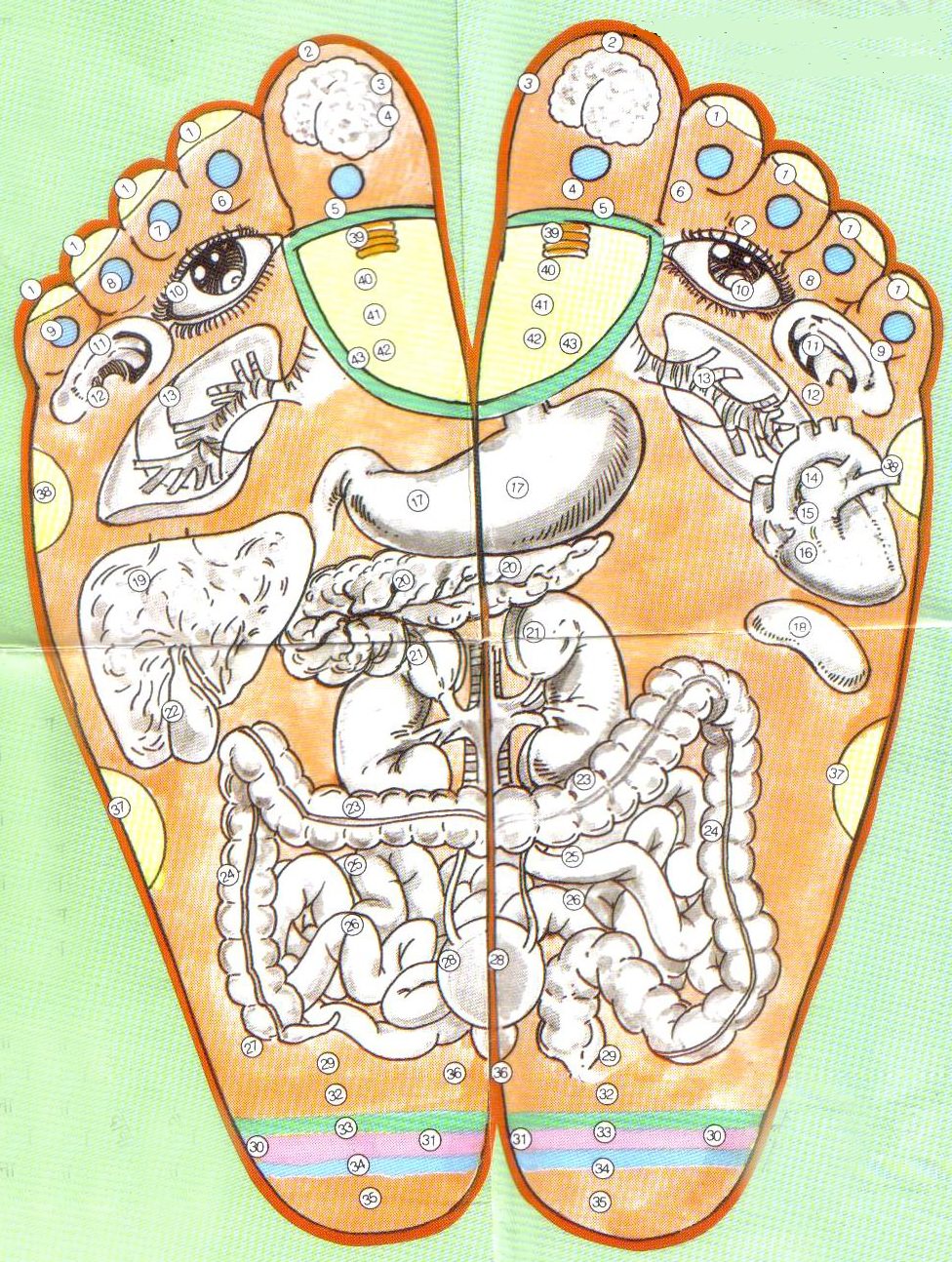Tipitaka
https://www.reference.com/world-view/holy-book-buddhism-d70e02c85297914
What is the holy book of Buddhism?
in 66) Classical Maori- Maori Maori,67) Classical Marathi- शास्त्रीय मराठी,68) Classical Mongolian-Сонгодог монгол хэл,69) Classical Myanmar (Burmese)-Classical မြန်မာ (ဗမာ),70) Classical Nepali-शास्त्रीय नेपाली,71) Classical Norwegian - Klassisk norsk,72) Classical Pashto-کلاسیکه نارویج

A:
Quick Answer
The Buddhist holy book is known as the Tipitaka.
The Buddha’s teachings were preserved in the Pali Canon, which acts as
an extensive analytical record written in Pali, the Buddha’s native
dialect. Pali is considered the classical language of Buddhism, and the
documents preserved in Pali make up the Tipitaka as well as other
Buddhist documents such as the Atthakatha, Tika, Anu-tika and
Madhu-tika.
Full Answer
Several months According to Pariyatti, a Buddhist non-profit organization, Tipitaka
after the Buddha’s death, a period known as maha-parinibbana, 500
scholars and disciples of the Buddha who had attained arahant-phala,
Buddhism’s highest level of sainthood, convened to discuss the
preservation of the Buddha’s teachings. The scholars formed The First
Council, a group whose purpose was to preserve the Buddha’s teachings
from distortion and unscrupulous revisions. The council then collected
and arranged the Buddha’s numerous teachings into a volume now known as
the Tipitaka.
literally translated means “three baskets.” Similarly, the Tipitaka is
divided into three divisions: Vinaya Pitaka, Sutta Pitaka and Abhidhamma
Pitaka. The Vinaya Pitaka explains the rules of conduct for the
monastic order. The Sutta Pitaka is a collection of discussions on
various subjects by the Buddha. Last, the Abhidhamma Pitaka contains the
Buddha’s teachings on the relationship between mind and matter and the
principles to transcend problems with each.

66) Classical Maori
66) Maori Maori
Te
Tipitaka (Pali kotahi tekau, “e toru,” + Pitaka, “kete”), ranei Pali
Canon, ko te kohinga o tuhinga reo Pali tuatahi, der haapiiraa hanga te
turanga o Theravada Buddhism. Ko te Tipitaka me nga kupu Pikana Paracanonical (nga korero, nga
korero, me etahi atu) tahi ko te tino tinana o nga tuhinga o te pukapuka
Theravada.
Ko
te pou pounamu ko te nui o nga tuhinga: i roto i te reo Ingarihi ka
tuhia nga tuhinga ki nga mano o nga pepa kua oti te tuhi. Ko te nuinga (engari ko nga mea katoa) o te Canon kua oti te whakaputa i te reo Ingarihi mo nga tau. Ka taea e koe te whakauru i roto i te mahi i roto i te mahi ki a koe i roto i te utu, me te whakahou i te mahi a te Atua.
Ko nga waahanga e toru o te Tipitaka:
Vinaya Pitaka
Ko
te kohinga o nga tuhinga e pā ana ki nga tikanga whakahaere mo te
whakahaere i nga korero o ia ra i roto i te Sangha - te hapori o nga
bhikkhus (kua whakaritea e nga miihini) me nga bhikkhunis. Tawhiti neke atu i Noa he rārangi o ngā ture, te Vinaya Pitaka også
ngā te kōrero i muri i te takenga o ia ture, whakarato i te pūkete
taipitopito o spørgsmålet otinga e rua o te Buddha pehea bevare hapori
inom au maite te hapori nui, me te kanorau i te pae varua.
Sutta Pitaka
Ko
te kohikohinga o nga whaikoki, ko nga korero, e kiia ana ki te Buddha
me etahi o ana akonga tino tata, kei roto katoa nga whakaakoranga o te
Buddhist Theravada. (Kei te wātea ake i te kotahi mano nga whakamaori i runga i
tenei pae tukutuku.) E wehewehea ana nga huinga i roto i nga koakayas e
rima (kohikohinga):
Digha Nikaya - te “kohinga roa”
Majjhima Nikaya - te “kohinga waenga-roa”
Samyutta Nikaya - te “kohinga huinga”
Anguttara Nikaya - ko te kohinga “
Khuddaka Nikaya - te “kohinga o nga tuhinga iti”:
Khuddakapatha
Dhammapada
Udana
Itivuttaka
Sutta Nipata
Vimanavatthu
Petavatthu
Theragatha
Therigatha
jataka
Niddesa
Patisambhidamagga
Apadana
Buddhavamsa
Cariyapitaka
Nettakarana (kei roto anake i te putanga Burmese o te Tipitaka)
Petakopadesa (”")
Milindapañha (”")
Abhidhamma Pitaka
E
Reworked te kohinga o tuhinga i roto i te som Tefitó Tefito’i Mo’oni
Doctrinal aroaro i roto i te Sutta Pitaka ka anōtia ki te anga som kan
nahanaha whāia til en Whakawa ki te āhua o te whakaaro me te Mahu’inga.
67) Classical Marathi
67) शास्त्रीय मराठी
Tipitaka
(पाली दहा, “तीन,” + Pitaka, “टोपल्या”), किंवा पाली Canon, प्राथमिक पाली
भाषा ग्रंथ संग्रह आहे, डर सैद्धांतिक थेरवडा बौद्ध पाया तयार. Tipitaka आणि paracanonical पाली ग्रंथ (समालोचने इतिहासाच्या, इ) एकत्र शास्त्रीय थेरवडा ग्रंथ पूर्ण शरीर बनते.
पली कॅनन साहित्य एक विशाल शरीर आहे: इंग्रजी अनुवाद मध्ये ग्रंथ हजारो मुद्रित पृष्ठांपर्यंत जोडा. कॅननच्या बर्याच (परंतु सर्व नाहीत) गेल्या काही वर्षांपासून इंग्रजीत प्रकाशित केले गेले आहेत. Selvom फक्त disse ग्रंथ एक लहान अपूर्णांक या वेबसाइट वर उपलब्ध आहेत, हे संग्रह सुरू करण्यासाठी एक चांगले ठिकाण असू शकत नाही.
टिपितकाचे तीन विभाग खालीलप्रमाणे आहेत:
विनय पितका
ग्रंथ
संग्रह आचार नियम vedrørende संघ आत दररोज घडामोडी पुनरावलोकने संचालित -
bhikkhus समुदाय (निवडले बौद्ध भिख्खू,) आणि bhikkhunis (नेमले नन्स). नियम फक्त एक यादी कितीतरी अधिक, Vinaya Pitaka तसेच बुद्ध उपाय दोन
spørgsmålet कसे bevare जातीय सलोखा inom मोठ्या आणि विविध आध्यात्मिक
समुदाय सविस्तर माहिती पुरविणे, प्रत्येक नियम मूळ मागे कथा समावेश आहे.
सुट्टा पिटका
बुद्ध
आणि त्यांच्या जवळच्या शिष्यांतील गुणधर्म असलेल्या सूत्त्सचे संकलन, आणि
थेरवडा बौद्ध धर्माचे सर्व केंद्रीय शिक्षण समाविष्ठ आहेत. (या वेबसाईटवर हजारापेक्षा अधिक अनुवाद उपलब्ध आहेत.) सूतांना पाच निमा (संग्रह) मध्ये विभाजित केले आहेत:
दिघा निकिया - “लांब संग्रह”
Majjhima Nikaya - “मध्यम-लांबीचे संकलन”
Samyutta Nikaya - “गटबद्ध संग्रह”
अंगुत्तारा निकिया - “पुढील कारणास्तव संग्रह”
खुडका निकिया - “लहान ग्रंथांचे संकलन”:
Khuddakapatha
Dhammapada
Udana
Itivuttaka
सुत्ता निपत
Vimanavatthu
Petavatthu
Theragatha
Therigatha
जातककथांमधील
Niddesa
Patisambhidamagga
Apadana
Buddhavamsa
Cariyapitaka
Nettakana (केवळ Tipitaka च्या बर्मी संस्करण मध्ये समाविष्ट)
पेटकोपडे (”")
मिलिंदपन्हा (”")
अभिधम पिटका
पाया
Sutta Pitaka मध्ये सादर तत्त्वे सैद्धांतिक सोम मध्ये ग्रंथ संग्रह
reworked आणि मन आणि प्रकरणाचा स्वरूप तपास इं जोपर्यंत लागू एक पद्धतशीर
मांडणी सोम kan मध्ये पुनर्रचना आहेत.

68) Classical Mongolian
68) Сонгодог монгол хэл
Типитакака
(Пали тит, “гурван,” паскака, “сагс”), эсвэл Пали канон нь Теравада
буддын шашны сургаалын үндсийг бүрдүүлдэг Пали хэлний анхан шатны
бичвэрүүд юм. Типитакака ба парачканигийн Пали текстүүд (тайлбар, өгүүллэг, гэх мэт)
хамтдаа Тервада сонгодог бичвэрүүдийн бүрэн биеийг бүрдүүлдэг.
Пали канон бол уран зохиолын асар том бүтээл юм. Англи хэлээр бичсэн номууд мянган хуудас хэвлэгддэг. Канадын ихэнх (гэхдээ бүгд биш) нь аль хэдийн англи хэл дээр хэвлэгдсэн. Хэрэв та хүсвэл, дараа нь текстийг бичиж, дараа нь эхэлж, дараа нь эхэлж эхлэх болно.
Типтака-гийн гурван хэсгүүд нь:
Виная Петрака
Хуврагууд
дахь хуврагууд / хуврагууд / болон хуврагууд / (томилогдсон гэлэнмаа)
-ын доторх амьдралын өдөр тутмын асуудлыг зохицуулсан ёс зүйн дүрмийн
цуглуулга. Дүрмүүдийн жагсаалтаас илүүгээр Виная Папака нь олон янзын сүнслэг
нийгэмлэгийн хүрээнд эв нэгдэлтэй хэрхэн эвлэрэх талаархи Буддагийн
шийдлийг хэрхэн шийдвэрлэх талаархи дэлгэрэнгүй мэдээллийг дүрэм бүрийн
гарал үүслийн талаар өгүүлдэг.
Сатта пандака
Теравада
буддизмын бүхий л төвд сургаалыг агуулдаг Будда болон хамгийн ойрын
шавь нартай холбоотой шүлгүүдийн цуглуулга буюу яриа. (Энэ вэбсайт дээр нэг мянга гаруй орчуулга байдаг.) Сарнасуудыг таван nikayas (цуглуулганд) хуваана:
Digha Nikaya - “урт цуглуулга”
Majjhima Nikaya - “дунд хугацааны цуглуулга”
Samyutta Nikaya - “бүлэглэсэн цуглуулга”
Anguttara Nikaya - “илүү нарийвчилсан цуглуулга”
Khuddaka Nikaya - “бага хэмжээний текстийг цуглуулах”:
Khuddakapatha
нь Äõàðìàïàäàãèéí
Udana
Itivuttaka
Сатта Нипата
Vimanavatthu
Petavatthu
Theragatha
Therigatha
jataka
Niddesa
Patisambhidamagga
Apadana
Buddhavamsa
Cariyapitaka
Nettakarana (зөвхөн Титтака улсын Бирмийн хэвлэлд багтсан)
Petakopadesa (”")
Milindapañha (”")
Абхидхамма Пэшака
Дээрээс
нь бичсэнээр, дараа нь эх сурвалжийн баримт бичгийг зохиож, дараа нь
Батта Патакта нь дахин зохион байгуулалтад орж, системийн системийг бий
болгох болно.



https://www.tradebit.com/filedetail.php/4318795v3656239-burmese-writing-pali-canon-buddhist-canon-tripitaka

Burmese
writing, Pali canon, buddhist canon, tripitaka, library of stone
tablets, Theravada Buddhism, Kuthodaw Pagoda, Mandalay, Burma, Southeast
Asia
canon, buddhist canon, tripitaka, library of stone tablets, Theravada
Buddhism, Kuthodaw Pagoda, Mandalay, Burma, Southeast Asia
Author: Stefan Auth
Date: 2005-02-03
Maximum available size: 18.2 Mpix.(5233 x 3480 pix.)
Lowest (724×469 pix.) resolution version: 85.- Euro (royalty free use on all media!)
In cooperation with imagebroker.net
Relevant keywords for this picture: asian, Burma, Burmese,
character, characters, documents, East, file, files, ideogram,
inboard, indoor, indoors, inside, interior, Kuthodaw, letter,
letters, library, Mandalay, of, Pagoda, paper, papers, photo,
plates, South, South-East, Southeast, stone, tablets, writ,
writing, writings, writs.
Tags: myanmar, plate, tablet, stefan auth
(ID 4318795)
File Data:
stock-photos,
DE, Member since 09/18/2006

More Files From This User
-
Building plan, spirit level and a brick on a drawing of a house -
Weather vane, witch riding a broom -
Set table with a plate, a glass, a knife and a fork on a red and white checkered tablecloth -
Three paint brushes dipped in red green and blue paint -
Antique silver triple candle holder, candelabra
Related Files
-
Canon Document Insertion Folding Unit-g1 Parts Catalog -
Canon Document Insertion Unit-k1 Service Manual -
Canon Document-insertion-unit-e1&fol ding-unit-f1 Parts Catalog -
Canon Document-insertion-unit-c1 Service Manual -
Service Manual Toshiba Mr 2014 Automatic Document Feeder -
Pdf Labeling And Stamper Pro - With Master Resale Rights -
Simple Html2pdf -
Getting Started With Orientdb - Tesoriero Claudio
https://archive.org/details/TipitakaTranslationConference
69) Classical Myanmar (Burmese)
69), Classical မြန်မာ (ဗမာ)
အဆိုပါ
Tipitaka (ပါဠိတစ်ဆယ်, “သုံး” + Pitaka, “ခြင်းတောင်း”), သို့မဟုတ်ပါဠိကို
Canon, မူလတန်းပါဠိဘာသာစကားကျမ်းများစုဆောင်းခြင်းဖြစ်ပါသည်, der
အယူဝါဒထေရဝါဒဗုဒ္ဓဘာသာရဲ့အခြေခံအုတ်မြစ်ဖွဲ့စည်းထားပါသည်။ အဆိုပါ Tipitaka နှင့် paracanonical ပါဠိကျမ်း (စသည်တို့ကိုမှတ်ချက်အ,
ရာဇဝငျ,) အတူတကွဂန္ထေရဝါဒကျမ်း၏ပြီးပြည့်စုံသောခန္ဓာကိုယ်ပါဝင်သည်။
ပါဠိကို Canon စာပေ၏ကျယ်ပြန့်ခန္ဓာကိုယ်သည်: အင်္ဂလိပ်ဘာသာပြန်ချက်အတွက်ကျမ်းပုံနှိပ်စာမျက်နှာထောင်ချီအထိထည့်ပါ။ နှစ်ပေါင်းများစွာအင်္ဂလိပ်လိုထုတ်ဝေအများစုမှာ (သို့သော်အားလုံးမဟုတ်) ကို Canon har redan er ၏။ Selvom disse စာသားများသာသေးငယ်တဲ့အစိတ်အပိုင်းကဤ website တွင်ရရှိနိုင်ပါသည်, ဒီစုဆောင်းမှုကိုစတင်နေရာကောင်းရှိနိုင်ပါသည်။
အဆိုပါ Tipitaka ၏သုံးသင်းဖွဲ့နေသောခေါင်းစဉ်:
ဝိနည်း Pitaka
ရဟန်းတို့၏အသိုင်းအဝုိင်း
(စီရင်ဘုန်းတော်ကြီးများ) နှင့် bhikkhunis (စီရင်သီလရှင်များ) -
ကျမ်းများစုဆောင်းခြင်းအဆိုပါသံဃာအတွင်း၌နေ့စဉ်ရေးရာပြန်လည်ဆန်းစစ်ချက်များအုပ်ချုပ်ငျြ့စည်းမျဉ်းစည်းကမ်းတွေကိုvedrørende။
စည်းမျဉ်းများမျှသာစာရင်းထက် ပို. သည်ဝိနည်း Pitaka
ogsåဗုဒ္ဓရဲ့ဖြေရှင်းချက်နှစ်ခုspørgsmåletကြီးမားတဲ့နှင့်ကွဲပြားခြားနားဝိညာဉ်ရေးရာအသိုင်းအဝိုင်း
inom ဘယ်လို bevare လူမျိုးရေးသဟဇာတ၏အသေးစိတ်အကောင့်ပေး,
တစ်ဦးချင်းစီစည်းမျဉ်းများ၏ဇာစ်မြစ်နောက်ကွယ်မှဇာတ်လမ်းများပါဝင်သည်။
သုတ် Pitaka
ဗုဒ္ဓနှင့်ထေရဝါဒဗုဒ္ဓဘာသာအပေါငျးတို့သအလယ်ပိုင်းသွန်သင်ချက််သည်သူ၏အရင်းနှီးဆုံးတပည့်အနည်းငယ်,
သေးပါဘူးစွပ်စွဲသုတ်, ဒါမှမဟုတ်ဟောပြောချက်များများစုဆောင်းခြင်း။ (။ ကျော်တထောသုတ္တန်ဘာသာသည်ဤ website တွင်ရရှိနိုင်ပါသည်) ကသုတ်ကိုငါး nikayas (စုဆောင်းမှုများ) ကြားတွင် fordelt နေကြသည်:
Digha Nikaya - ကို “ရှည်လျားသောစုဆောင်းခြင်း”
Majjhima Nikaya - ကို “အလယ်အလတ်အရှည်စုဆောင်းခြင်း”
Samyutta Nikaya - ကို “အုပ်စုလိုက်အစုအဝေး”
Anguttara Nikaya - ကို “yderligere-factor စုဆောင်းခြင်း”
Khuddaka Nikaya - က “နည်းနည်းကျမ်း၏စုဆောင်းမှုကို”:
Khuddakapatha
တရား
Udana
Itivuttaka
သုတ် Nipata
Vimanavatthu
Petavatthu
Theragatha
Therigatha
jataka
Niddesa
Patisambhidamagga
Apadana
Buddhavamsa
Cariyapitaka
Nettippakarana (သာ Tipitaka ၏မြန်မာ edition အတွက်ပါဝင်သည်)
Petakopadesa ( “”)
Milindapañha ( “”)
အဘိဓမ္မာ Pitaka
ဒေသနာသုတ်
Pitaka အတွက်တင်ပြ som
အရင်းခံကျတာကတော့အခြေခံမူများတွင်ကျမ်းများစုဆောင်းခြင်းစိတ်ထဲ၏သဘောသဘာဝထဲသို့စုံစမ်းစစ်ဆေးရေးနှင့်အရေးပါ
en သေးပါဘူးသုံးစွဲမှုကိုစနစ်တကျမူဘောင် som kan
သို့အခုမှနှင့်ပွနျလညျဖှဲ့စညျးနေကြသည်။
http://www.gonepal.eu/about-nepal/culture/musical-nepal


Musical Nepal
 |
 |
 |
substance in its culture and society. No ritual, festival or any
ceremony go without these instruments
 being
beingplayed. If historic facts are anything to believe then Nepal has more
than 200 musical instruments of its own and only about 100 have been
discovered till date.
Nepal has so many forms of music of its own
to share with the rest of the world. Moreover, the musical tradition is
so diverse along with lots of unique musical instruments being played.
Every ethnic group
An ethnic group (or ethnicity) is a group of people whose members
identify with each other, through a common heritage, consisting of a
common language, a common culture (often including a shared religion)
and a tradition of common ancestry (corresponding to a history of
endogamy). has their unique set of instruments
that they play. Amongst many, an ethnic community that has historic
touch with Nepalese music is the Damai. They are the traditional
musicians who play musical instruments in ceremonies, occasions, etc. to
perform the rituals and tradition. The connection of Damai seems to be
attached with the innovation of a flat drum called Damaha which is
generally prepared by wood or metal. The  name Damai denotes the functional relation between Damaha and the one playing it.
name Damai denotes the functional relation between Damaha and the one playing it.
It
is sad that there are still hundreds of instruments, which are unheard,
untouched and unexplored but it is worse when beautiful instruments
like the Sarangi 
Man playing Sarangi, Nepal
also get missing in the darkness. Sarangi is the Nepalese version of
the violin and is loved by all the Nepalese people. However, the
masters of Sarangi have slowly been moving away from it and we do not
get to hear much of it today. The musicians of the ethnic Gandharbha community are the best Sarangi players in Nepal and they create magic when they play heart touching tunes with their Sarangi.
However, the most complex musical culture in this Himalayan nation is that of the Newars Newar
people are the indigenous people of Kathmandu Valley. They are known to
excel in arts like wood crafting, pottery, music (mainly percussion and
wind instruments), dance and paintings. Their arts today are mainly
displayed in temples although many of their houses still have elaborate
woodcarvings. The Newars are till date devoted to their ancient cultural
skills and have been passing it to forthcoming generation since
history. of Kathmandu valley,
Once a lake, Kathmandu valley is the union of three Newar sister
cities namely Kathmandu, Lalitpur and Bhaktapur. Surrounded by hills on
all the sides, Kathmandu valley has always remained the center of
Nepalese civilization and current modern urbanization of Nepal.
and they are flourishing it till date. The Newars live in a
Buddhist-Hindu society where the two religions coexist. Caste system
exists within Newar community and each performs its own characteristic
musical repertory and ritual duties during festivals and processions.
Different musical instruments are in practice in joyful festivals and
also in funeral processions.
Dhimey is the most common musical
instrument amongst the Newars. It is considered as the oldest Newari
musical instrument. This drum is played in almost all ceremonial
occasions. Although it is made of brass or other metals today, Dhimay
was actually  constructed
constructed
from cylindrical hollowed tree trunk with leather pads at both of its
ends. Its left hand side sounds much than the other side which carries a
tuning paste inside. Its main feature is its capacity to produce a
multiple reverberating echo. Dhimay is always accompanied with Bhusyah
(a pair of cymbals).
Nagara is another historic Newari musical
instrument which is actually a kettle drum played with two sticks. This
instrument has also been mentioned in Hindu mythology although in
various other names. It is often played in pair, known as Joh Nagara.
Nagara is also popular within other ethnic groups.
Even a conch or Sankha 
Sankha
is a musical instrument in Nepal. It is an ancient instrument and is
highly regarded by the Hindus. Playing of Sankha indicates starting of
any new work. Sankha is usually played during rituals.
 Any
Any
description of Nepalese musical instruments is never complete without a
mention of Maadal which also happens to be the national musical
instrument of Nepal. It is a type of drum which is struck on both ends,
using a rhythmic pattern. Nepali Folk dances are always accompanied by
the Madal 
Madal: Nepali Music ,
and it is virtually impossible to travel through any village in Nepal
without hearing its soft and mellow sounds being played somewhere.
Another
instrument worth mentioning is the tabla. The classical Kathak dance is
impossible to perform without the beats of tabla. The tabla is actually
two drums, considered as one instrument. It is believed that it
originated when a much older style of drum, was “cut in two”. It is a
very diverse instrument and can also accompany Western style music. The
performance of a tabla solo executed by a master can be unforgettable.
Nepali
folk dances are jam-packed with dazzling premises of love, life,
religion, happiness, sorrow and often a lot of good-natured teasing.
Dancers wear traditional costumes that are colorful and have elaborate
jewelry  and hair ornaments.
and hair ornaments.
Again,
the Newars have a rich history in traditional, classical and folk
dances. Various dance events take place in the Newar societies on
various occasions. In fact, the Newars are so duly intermixed with music
and dances that not a single festival, feast or ceremony passes without
music and dance.
For instance, during the crop harvesting season,
the farming couples celebrate with the Dhimey Dance between them in
their community gatherings along with sparkling music and songs.
Likewise, during all Chariot festivals 
Chariot Festival: Kathmandu Nepal, the Newars witness the natural and impulsive Lakhe dance 
Lakhe Dance in Nepal
in the street which is actually is a form of classical dance. This
dance has religious beliefs attached to it. It is performed to the music
of cymbals and special drums called Dhimey.
Similarly, the Newar Buddhists love to perform Manjushree
Manjushree is a bodhisattva associated with transcendent wisdom in
Mahayana Buddhism. In Esoteric Buddhism he is also taken as a
meditational deity. dance during rituals. It is
credited to the god who founded the Kathmandu Valley. The physical and
spiritual characteristics of the god are demonstrated in this beautiful
stylized dance, which combines soft body movements with hand signs, each
one with a meaning of its own.
Music and dance in essence has
always been playing a crucial role to promote harmonious relationship
between people to people of this country. Nepalese music and dance is
highly dispersed like its ethnicity. Cultural and traditional music and
dance is the very pride & soul of this nation and is the mirror that
reflects the beauty, nativity & the life pattern of the people.

70) Classical Nepali
70) शास्त्रीय नेपाली
Tipitaka
(पाली तिई, “तीन,” pitaka, “टोकरी”), वा पाली कैनन, प्राथमिक पाली भाषा
ग्रंथहरूको संग्रह हो जुन थेरिवडा बौद्ध धर्मको सिद्धवादी आधार बनाउँछ। Tipitaka र Paracanonical पाली टेक्स्ट (टिप्पणी, इतिहास, आदि) एक साथ क्लासिकल थेरेवडा ग्रंथहरूको पूर्ण शरीर गठन गर्दछ।
पाली कैनन साहित्यको एक विशाल शरीर हो: अंग्रेजी अनुवादमा ग्रंथ हजारौं मुद्रित पृष्ठहरूमा थपिन्छन्। अधिकांश (तर तर सबै) कैनन पहिले देखि नै अंग्रेजी मा प्रकाशित गरेको छ। यो सबै भन्दा राम्रो छ कि तपाईं को उपयोग गर्न को लागि कुनै पनि प्रविधी
को उपयोग गर्न को लागि, यस नमूना को रूप मा शुरू र शुरू मा स्टार्ट।
Tipitaka को तीन भागहरु:
Vinaya Pitaka
सघमा
दैनिक दैनिक कार्यहरू सञ्चालन गर्ने नियमहरूको सन्दर्भमा पाठहरूको संग्रह -
भक्खस (निर्धारित भिक्षुहरू) र भखभुन (क्रम नन) समुदायको। नियमहरु को सूची मा परे, विनाया पिटकका पनि प्रत्येक नियम को उत्पत्ति को
पीछे कहानियां शामिल छ, बुद्ध को समाधान को विस्तृत विवरण प्रदान गर्दछ कि
कसरि एक ठूलो र विविध विविध आध्यात्मिक समुदाय को भित्र सांप्रदायिक सदन
को बनाए राखन को बारे मा।
Sutta Pitaka
सट्टा,
या भित्री संग्रह, बुद्ध को लागि र उनको निकटतम चेलाहरु को केहि, जिसमें
थेरेवडा बौद्ध धर्म को सबै केन्द्रीय शिक्षा शामिल छ। (यस वेबसाइटमा एक हजार भन्दा बढी अनुवादहरू उपलब्ध छन्।) सट्टा पाँच नाकाहरू (संग्रह) बीच विभाजित छन्:
Digha Nikaya - “लामो संग्रह”
Majjhima Nikaya - “मध्यम-लम्बाइ संग्रह”
Samyutta Nikaya - “समूहबद्ध संग्रह”
Anguttara Nikaya - “थप-तथ्ययुक्त संग्रह”
खाडाका Nikaya - “सानो ग्रंथहरूको संग्रह”:
Khuddakapatha
Dhammapada
Udana
Itivuttaka
Sutta Nipata
Vimanavatthu
Petavatthu
Theragatha
Therigatha
Jataka
Niddesa
Patisambhidamagga
Apadana
Buddhavamsa
Cariyapitaka
Nettakarana (केवल Tipitaka को बर्मी संस्करण मा शामिल)
Petakopadesa (”")
मिलिन्डपन्ना (”")
अभिषेक पिटाका
यस
प्रविधी को रूप मा, म एक पिटका को बारे मा र अधिक मा सुधार गर्न को लागि
तैयार हो र पुनर्गठन प्रणाली को रेजिनामिस्मे रैमिस, म एक छ कि तपाईं को
रूप मा र अधिक पढाई को रूप मा।














71) Classical Norwegian
71) Klassisk norsk
Den
Tipitaka (Pali ti, “tre”, + pitaka, “kurver”), eller Pali canon, er
samlingen av primære pali-språktekster som danner det doktrinære
fundamentet til Theravada Buddhism. Tipitaka- og Paracanonical Pali-teksten (kommentarer, kronikker, etc.)
sammen utgjør hele kroppen av klassiske Theravada-tekster.
Pali-kanonen er en stor litteratur: i engelsk oversettelse legger teksten opp til tusenvis av trykte sider. De fleste (men ikke alle) av Canon har allerede blitt publisert på engelsk i løpet av årene. Although only a small part of these texts are available on this website, this collection may be a great place to start.
De tre divisjonene til Tipitaka er:
Vinaya Pitaka
Samlingen
av tekster om opptredener som styrer de daglige forholdene i Sangha -
samfunnet av bhikkhus (ordinerte munker) og bhikkhunis (ordinerte
nonner). Langt utenfor listen over regler inneholder Vinaya Pitaka også
historiene bak hver regels opprinnelse, og gir en detaljert beskrivelse
av Buddhas løsning på spørsmålet om hvordan man opprettholder felles
harmoni innenfor et stort og mangfoldig åndelig samfunn.
Sutta Pitaka
Samlingen
av suttas, eller diskurser, tilskrevet Buddha og noen av hans nærmeste
disipler, som inneholder alle de sentrale læresetningene til Theravada
Buddhism. (Mer enn tusen oversettelser er tilgjengelig på denne nettsiden.) Suttas er delt inn i fem nikayas (samlinger):
Digha Nikaya - den “lange samlingen”
Majjhima Nikaya - “midtlange samlingen”
Samyutta Nikaya - “gruppert samling”
Anguttara Nikaya - den “videre satsede samlingen”
Khuddaka Nikaya - “samlingen av små tekster”:
Khuddakapatha
Dhammapada
Udana
Itivuttaka
Sutta Nipata
Vimanavatthu
Petavatthu
Theragatha
therigatha
Jataka
Niddesa
Patisambhidamagga
Apadana
Buddhavamsa
Cariyapitaka
Nettakarana (inkludert bare i den burmesiske utgaven av Tipitaka)
Petakopadesa (”")
Milindapañha (”")
Abhidhamma Pitaka
De
samling av tekster, hvor de underliggende doktrinære prinsippene i
Sutta Pitaka er reprodusert og reorganisert i en systematisk ramme som
kan brukes på en undersøkelse i naturen av sinn og maling.

72) Classical Pashto
72) کلاسیکه نارویج
ټپټکاک (پال ټی، “دری،” + ککاکا، “بکسونه”)، یا د پال کینون، د لومړني پارسي متنونو مجموعه ده چې د توریواډا بیتزم نظری بنسټ جوړوي. ټپټیککا او د پاراکانیلیکي پال متن (تبصرې، تاریخونه، او نور) د یو کلاسیک توریواډا متنونو مجموعه جوړوي.
د پال کانټن د ادبياتو لویه برخه ده: په انګلیسي کې ژباړه د زرګونو چاپ شویو پاڼو سره اضافه کیږي. ډیری (مګر نه ټول) د کینن لا دمخه په تیرو کلونو کې په انګلستان کې خپاره شوي. تاسو کولی شئ چې د ټیکنالوژۍ په اړه معلومات ترلاسه کړئ، او په سمه توګه یې په پیل کې ډډه وکړئ.
د ټیتټکا درې درې څانګې دي:
Vinaya Pitaka
د سنګا دننه د ورځني چارو د کنترول د قواعدو په اړه د متنونو مجموعه - د باچاخس (آرشیف راهیسې) او بھخخون (مقرر شوي نون) ټولنې. یوازې د اصولو یوه لست په پرتله ډېر، د Vinaya Pitaka også د هرې واکمنۍ
مبدا تر شا د داستانونو شامل دي، د بودا د حل دوه spørgsmålet څنګه bevare
ایخ آهنگی inom یو لوی او متنوع معنوي ټولنې يو مفصل حساب برابرول.
سوټا پټکا
د
سوټونو یا غوږونو راټولول، د بودا ته منسوب شوي او د هغه تر ټولو نږدې
شاګردانو ته منسوب شوي، چې د تیریودا بودهیز ټول مرکزي زده کړې لري. (په دې ویب پاڼه کې له یو زرو ډیرو ژباړو څخه شتون لري.) دا سټیټونه د پنځو کییاس (ټولګه) کې تقسیم شوي دي:
دوگا نکایا - “اوږد ټولګه”
مججمه نکایا - د “منځنۍ کچې راټولول”
سامیتا نکایا - “ډله ایز ټولګه”
Anguttara Nikaya - د “yderligere-فکتورنه کلکسیون”
خدوکا نيکا - د “کوچني متنونو مجموعه”:
Khuddakapatha
Dhammapada
Udana
Itivuttaka
سوټا نیپتا
Vimanavatthu
Petavatthu
Theragatha
Therigatha
Jataka
Niddesa
Patisambhidamagga
Apadana
Buddhavamsa
Cariyapitaka
Nettippakarana (شامل يوازې په د Tipitaka د برما ګڼه)
پیټاکاپیسا (”")
Milindapañha ( “”)
ابهامما پکاکا
په
som پرنسيبونه عقيدوي په Sutta Pitaka وړاندې متنونو کلکسیون Reworked دي
او غړيواو یو سیستماتیک چوکاټ som Kan د ذهن او د موضوع د ماهیت د لين en
تحقیقاتو Applied.
Good to Know - Helpful Pressure Points!
to ancient oriental beliefs, every organ in the human body has a
representative pressure point in the hand and the foot. According to
this method, massaging and applying pressure to this point for about 10
minutes, should alleviate pain, cure diseases and make us feel much
better. Get to know the most important pressure points in the hands and
feet.

The Feet
